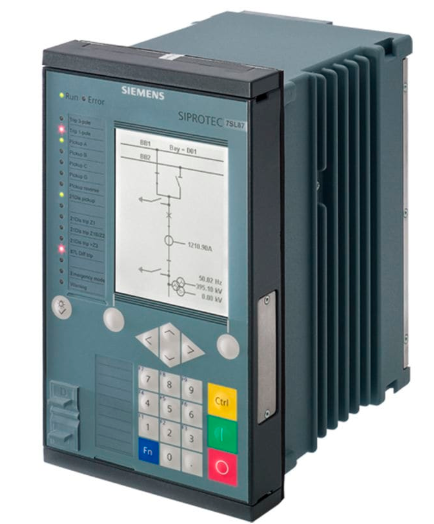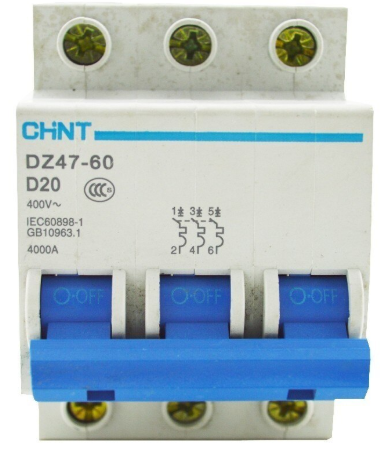Main keywords for this artile are Protective Device Coordination Analysis, Circuit Breaker Coordination, Short-Circuit Coordination, Fuse to Fuse Coordination, Relay Coordination Procedure.
Protective Device Coordination Analysis
The selection of relays and the proper trip settings to protect feeders, transformers, motors and generators requires a basic understanding of the operating characteristics of Protective Device Coordination Analysis. The current and voltage conditions on the electrical power distribution system under the various possible fault conditions shall also be understood. To evaluate and achieve selective isolation of faults on plant electrical power systems, it is necessary to plot the time-current characteristics of all the protective devices that are in series.
Selective coordination of protective relays has a major impact on a plant’s electrical system performance and reliability. This Article ”Protective Device Coordination Analysis” provides guidelines for creating, analyzing, and documenting a coordination study. The coordination study can optimize circuit protection to minimize damage to system components and prevent injury to personnel. Additional benefits include sustaining service continuity and limiting the extent and duration of service interruptions.
The primary purpose of a coordination study is to determine satisfactory ratings and settings for electrical system protective devices. Protective devices shall be chosen so that pickup currents and operating times are short, but sufficient to override system transient overloads, for example inrush currents experienced when transformers are energized or motors started. When an abnormality occurs, the protective device shall isolate a minimal amount of the electrical system. Further, the protective device shall be coordinated so that the circuit interrupter closest to the fault opens before other devices.
The relay coordination study shall follow the guidelines given in IEEE 141 and 242.
Main keywords for this artile are Protective Device Coordination Analysis, Circuit Breaker Coordination, Short-Circuit Coordination, Fuse to Fuse Coordination, Relay Coordination Procedure.
Short-Circuit Coordination
Symmetrical Short-circuit Currents
A Short-Circuit Coordination study shall be made to determine values needed for the coordination study. The Short-Circuit Coordination study shall include all major contributions to a fault. Symmetrical short-circuit currents shall be plotted at each voltage level (for example, values for short-circuit currents on both sides of each transformer shall be determined). Minimum symmetrical short-circuit current shall also be verified, to take care of installations where differences exist due to variations in utility supply, number of transformers in parallel, or fault at the end of the feeder versus fault at the substation bus. This step is necessary to be sure protective devices operate as intended over the operating range.
Fault Contribution Considerations
The connection to the electric utility system is often made through a supply transformer. Since a fault within a plant appears as only a small increase to the utility system, the contribution remains constant. Large numbers of small induction motors and single large induction motors make sizable contributions to short-circuit currents, which greatly affect the operation of fuses and instantaneous devices. Large generators and synchronous motors behave somewhat the same as induction motors. Where present, the various short-circuit currents available from these machines shall be included, remembering that the instantaneous impedance of these machines changes with time during the fault. The length of time it takes the protective device to operate is related to this changing impedance.
For Short-Circuit Coordinatio,n Transformers connected in parallel on the secondary side shall include the combined short-circuit currents. The available ground-fault current shall be identified on the ground relay coordination graph. The fault current during a line-to-ground fault is sometimes limited by a resistor on the neutral leg at the power source.
Transformer Data
The full load current shall be plotted for each transformer. Care shall be taken to determine whether the self-cooled or fan-cooled rating of the transformer is being used. The inrush current shall also be plotted to ensure coordination with instantaneous settings of relays. If several transformers are connected to a single feeder, then the total inrush current shall be plotted. Normally, this value is plotted at 12 times full load current. However, it may vary from 8 to 14 times, depending upon the manufacturer and transformer size. The inrush current value is plotted at 0.1 s and shall be below the primary protection device curve.
Transformers can be damaged by faults external and downstream of the transformer if they are not provided adequate through fault protection. The transformer damage curve shall be plotted on the relay coordination sheet. The fault protection curve depends on the transformer size, impedance, and predicted fault occurrences. It has been widely recognized that damage to transformers from through faults is the result of mechanical and thermal effects. Although the temperature rise associated with high magnitude through faults is typically quite acceptable, the mechanical effects are intolerable if such faults are permitted to occur with any regularity. This results from the cumulative nature of some of the mechanical effects, particularly insulation compression, insulation wear, and friction-induced displacement. For this reason, separate damage curves have been created for different categories of transformers that experience infrequent and frequent faults. Frequent faults are generally defined as more than ten in the transformer’s lifetime. See IEEE 242 for data on transformer damage curves.
Winding connections affect the coordination study. In plotting coordination curves, it is important to know the relationship between transformer primary line currents and secondary line currents for various types of secondary faults. This relationship may require the protective device curves to be shifted horizontally on the coordination graph. For delta primary-grounded wye secondary, the maximum primary line current is [0.58 X secondary voltage (line-to-line)/primary voltage (line-to- line)] X secondary fault current for a secondary line-to-ground fault. For a line-to-line fault, the 0.58 becomes 1.16.
For delta primary-corner-of-delta grounded secondary transformers, the maximum primary line current is [1.0 X secondary voltage (line-to-line)/primary voltage (line-to-line)] X secondary fault current for a secondary line-to-line or line-to-ground fault. See IEEE C37.91 for additional discussion on transformer protection. This reference provides:
a. Detailed discussion of the type of faults to which transformers are exposed
b. Common protection schemes and device
c. Special protection devices
d. Typical coordination curves for transformer protection
Motor Data
Large Motor Coordination
When large motors require coordination, two pieces of basic data shall be plotted before any coordination is attempted: the thermal damage curve and the motor-starting characteristic curve. Large motors, or the transformers that supply them, can be damaged if the vendor’s recommendations on number or frequency of starts are violated. Waiting periods of an hour or more may be involved after making a certain number of starts. The manufacturer shall furnish the thermal damage curve. This curve shall be obtained at the time of the original purchase. All motor protective relaying shall fall below this curve.
If the exact motor-starting characteristic is available, it shall be plotted. The characteristic curve consists of the following:
a. Inrush current
b. Locked-rotor current
c. Current during acceleration
d. Allowable stall time
e. Motor full-load current
If all the information is not available, the characteristics (or typicals) that can be obtained shall be plotted. More recently manufactured energy-efficient motors have been found to experience a higher inrush current than older motors. This shall be considered when using typical data. Many times, the entire coordination is based upon the relaying of a large motor, because its protective devices are set so high that they dictate the settings of all relaying upstream, including that of the public utility.
Specific Motor Protection Devices
Another category that shall be required on coordination graphs is specific motor protection devices. The devices may be as simple as thermal overloads or the more complex microprocessor-based motor protection relays (MPRs) that are common today. The settings for these MPRs are too numerous to include with the protective settings curves in their entirety. Typically, only an abbreviated summary is included with the curves, and the complete setting record for these motor relays is shown in tabular form.
For typical protection schemes based on motor size and type of switching device (motor controller or circuit breaker) see IEEE C37.96. This reference provides a comprehensive listing of device numbers that may be applied to motors, along with information on their function and settings.
Relay Coordination Procedure
Data Shown on Drawings
The following data shall be shown on the coordination drawings or indicated on a provided data sheet or both. Data shall be indicated for each relay curve.
For Relay Coordination Procedure, The relay tap setting and corresponding minimum pickup current shall be designated on the relay curve (at the voltage in which the relay’s current transformer is connected).
Instantaneous settings are shown as a vertical line from the time characteristic for Relay Coordination Procedure. Instantaneous settings for motors shall be set at approximately 175 percent of locked-rotor current. Instantaneous settings for relays feeding unit substation transformers shall be set at approximately 200 percent of the secondary three phase symmetrical fault current. The 200 percent margin comprises 160 percent for asymmetrical dc offset, 110 percent for voltage variance, and 113 percent for safety margin.
The ‘Tap’ and ‘Inst. setting’ information shall include the range available along with the actual setting. Additional settings for special relays, for example voltage and differential relays, shall also be indicated.
Protective Relays
Protective relays are classified by the variable they monitor, or by the function they perform. Some common relays are overcurrent (51), differential (87), and directional overcurrent (67). As shown in the parentheses, the ANSI relay function number shall be indicated on the curve drawing and attached documentation. See IEEE 141 for a complete listing of ANSI relay function numbers.
The application and coordination of the relays is usually a mixture of good engineering practice and protection performance compromises. The system is usually separated into zones, with specific relay protection for each zone. If the primary protection in the affected zones does not operate properly, some form of backup relay protection shall be provided. With backup protection, the time for the fault to clear will increase and typically cause more of the system to be de-energized.
Circuit Breaker Coordination
Breaker Curves
Breaker curves for low-voltage power circuit breakers shall be plotted on the Circuit Breaker Coordination curve with the following information:
a. Both pickup points and the range of pickups shall be shown
b. Long-time pickup settings in multiples of trip-device or sensor current shall be shown (including the primary current value). Long-time delay characteristics shall be shown as a function of time.
c. Short-time pickup settings in multiples of trip-device or sensor current (including the primary current value) shall be shown. Short-time delay characteristics shall be shown as a function of time.
d. Instantaneous pickup setting in multiples of trip-device or sensor current (including the primary current value) shall be shown
e. For circuit breakers with ground-fault detection, the pickup settings and ranges shall be shown with Circuit Breaker Coordination Curve.
Fuse to Fuse Coordination
Both the minimum melting time and the total clearing time curves shall be shown on the Fuse to Fuse Coordination graph. A fuse may coordinate on one fault, but if the minimum melting curve has been crossed, the fuse may not coordinate on the next fault. Standards permit ±10 percent current tolerance for fuse curves. This means that an actual fuse curve, supplied by a vendor as a single-line curve, is actually a band of ±10 percent current values from those on the single-line curve.
For information on primary fusing of power transformers, see IEEE 242 and NFPA 70. When fuses operate in the current-limiting range, the instantaneous peak let-through current shall be taken into account when trying to obtain selective coordination. The total energy let-through by the fuse is a function of current squared (I2) multiplied by time (t) and is commonly designated as I2t let-through. For two fuses in series to Fuse to Fuse Coordination properly, the total clearing I2t of the downstream fuse shall not exceed the minimum melting I2t of the upstream fuse. Most vendors provide ratio information between their fuses to facilitate coordination. For a fuse to coordinate with an upstream relay or breaker with an instantaneous setting, the total clearing I2t shall not exceed the instantaneous pickup. This is why instantaneous settings are not usually used on a circuit breaker that feeds a motor control center.
Cables
The overcurrent protection required for a 600 V cable is dictated by the ampacity of the conductor in accordance with NFPA 70. 11.2 Feeders over 600 V without overcurrent protection shall have short-circuit protection in each ungrounded phase. The protective setting can be as high as three times ampacity for a fuse, or six times ampacity for a breaker. Cable/conductor heating limit curves shall be plotted on the coordination graph, to ensure thermal limits are not exceeded.
Medium voltage (MV) cable shield ampacity shall also be evaluated during a coordination study. This information can be included and evaluated on the ground relay coordination graph. During phase-to-ground faults, the cable shield on MV cables carries part of the fault return current. To prevent cable damage, the cable shield ampacity shall be adequate to carry the available system ground-fault current for a time period exceeding the system ground-fault clearing time.
Coordination Margins
To obtain selective coordination between devices in series, coordination margins shall be used when selecting device settings. Note that fuses and circuit breakers are usually represented on the coordination graph with operating bands. These bands account for manufacturing operating tolerances. When the settings are being evaluated, the upper and lower edges of the bands shall be used.
The low-voltage circuit breaker (LVCB) curve and the fuse curve shall be clearly separated between the upper edge of the downstream device and lower edge of the
upstream device. No overlap shall occur. The time margin between relays is usually recognized as 0.4 s. This assumes an eight cycle breaker with normal manufacturing tolerances and induction relay overtravel. This time margin can be reduced by the following methods:
a. Calibrating relays at the operating point
b. Using faster-operating breakers
c. Using static relays with no overtravel
Depending on the operating time of the circuit breaker, different margins are required. The margin of 0.4 s is based on the operating time of an eight-cycle breaker plus 0.1 s for overtravel, plus 0.17 s for manufacturing tolerances and relay-setting errors. If the relays are properly calibrated and tested, the manufacturing tolerance can be reduced to 0.12 s. Static relays require a smaller coordination margin because of the absence of relay overtravel.
When coordinating relays and other downstream protective devices, for example a downstream fuse, only the relay overtravel and tolerance margins need to be considered.
Due to unforeseen circumstances, selective coordination may not be possible. For example, a primary protection device curve may not fit completely under a backup protection device curve. In this case, either maximum protection or selective coordination shall be compromised. Usually, however, the compromise decided upon results in the least amount of economic impact. See IEEE 242.
Additions to Graphs
A simplified single-line diagram shall be included to show only the parts involved in the coordination, for example the power transformer, breakers, fuses, and current transformers. The following data shall be included on the coordination curve drawing or the data sheet (or both)
a. Current transformer ratios
b. Voltage levels
c. Transformer capacity rating
d. Transformer impedance
e. Fault location
f. Device designations
Notes shall be added to explain unusual conditions that may affect coordination. For example, if a large power source (for example, a generator) in the vicinity of the plant is out of service, the short-circuit may be greatly reduced. Such an example might also affect the starting of large motors, or the resulting voltage drop might cause shutdown of other equipment.
References to one-line diagrams and other drawings shall be listed on the coordination drawing.
Relay Coordination Software Packages
The time required to generate coordination drawings has been dramatically reduced by computerized drawing systems. Computer software packages are available that generate most required documentation for a coordination study. These programs provide a printout of the coordination graph and data sheets. Some programs have been customized to provide drawing files that can be imported into a drawing system (for example, Micro Station) and modified for specific uses. This is especially beneficial when the curve is too congested to be readily viewed on a letter-size sheet of paper.
The software packages have a library of device curves that are automatically constructed after entering in device parameters. If a new or uncommon device is required, a method of adding to the library or applying the curve directly to the drawing is provided. Coordination curves shall be prepared using ETAP by OTI or EDSA PALADIN DESIGNBASE by EDSA Power Analytics.
Main keywords for this artile are Protective Device Coordination Analysis, Circuit Breaker Coordination, Short-Circuit Coordination, Fuse to Fuse Coordination, Relay Coordination Procedure.



